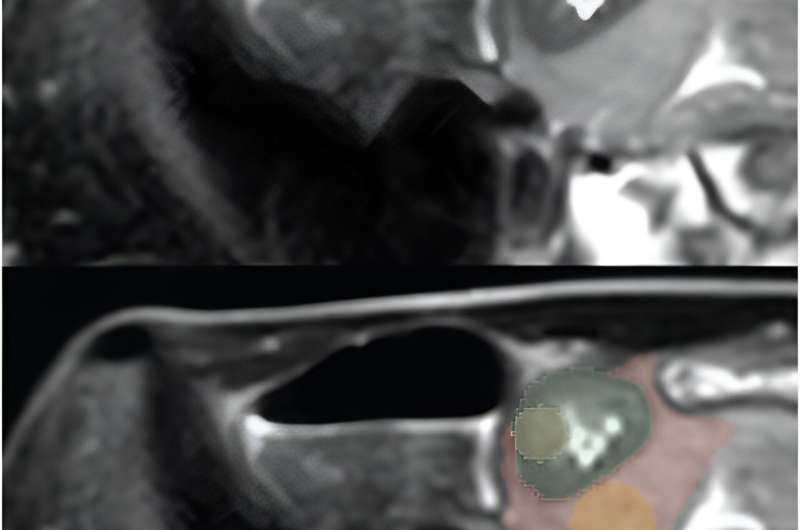This article has been reviewed according to Science X's editorial process and policies. Editors have highlighted the following attributes while ensuring the content's credibility:
fact-checked
peer-reviewed publication
trusted source
proofread
Diagnosing pediatric Crohn disease with radiomic and clinical data

An accepted manuscript published in the American Journal of Roentgenology (AJR) found that deploying a radiomic-based model with T2-weighted MRI data could increase diagnostic accuracy for pediatric Crohn disease (CD).
Noting that ileal-wall radiomic features were strongly predictive of CD—and that model performance improved when ensembled with clinical data—"a radiomic machine learning model predicted CD diagnosis with better performance than two of three expert radiologists," wrote corresponding author and AJR Pediatric Imaging Section Editor Jonathan R. Dillman, MD, MSc.
The manuscript identified patients who underwent MR enterography (MRE) for suspected ileal CD—enrolling participants with newly diagnosed ileal CD or serving as healthy controls from December 2018 to October 2021.
Using axial T2-weighted SSFSE images, one radiologist selected two slices showing the greatest terminal ileal wall thickening. Four ROIs were then segmented, radiomic features were extracted from each, and support-vector machine models were trained to catalog the presence of ileal CD. Three fellowship-trained pediatric abdominal radiologists independently classified the presence of ileal CD on SSFSE images, with clinical diagnosis following positive endoscopy and biopsy serving as the reference standard.
Ultimately, the best-performing radiomic-only model in this manuscript used a round bowel-wall ROI in the area of greatest terminal ileum thickening, having AUC of 0.95 and accuracy of 89.6%. Ensembling this radiomic-only model with a clinical-only model achieved AUC of 0.98 and accuracy of 93.5%. Meanwhile, the three specialized radiologists achieved accuracies of 83.7%, 86.7% and 88.1%.
More information: Richard X. Liu et al, Machine Learning Diagnosis of Small Bowel Crohn Disease Using T2-Weighted MRI Radiomic and Clinical Data, American Journal of Roentgenology (2023). DOI: 10.2214/AJR.23.29812





















